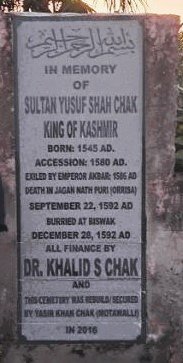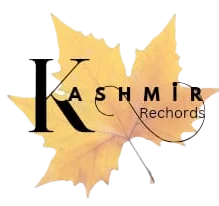By: Kashmir Rechords Editorial Desk
A new storm is sweeping through Jammu and Kashmir’s literary and cultural circles. The spark? A centuries-old question: Where lies Habba Khatoon, the poetess whose verses once made mountains weep?
For generations, Kashmiris have revered Habba Khatoon as the “Nightingale of Kashmir” — a poetess whose songs of love and longing transcended time. But now, her grave has become the subject of a fierce debate — one that pits oral tradition against archival records, romantic legend against historical fact.
The Bihar Connection: Shad Ramzan’s Visit Reignites Old Beliefs
The latest chapter began when noted Kashmiri writer and academic Professor Shad Ramzan, during his recent visit to Biswak, Bihar, posed beside the graves believed to belong to Yousuf Shah Chak, the last independent ruler of Kashmir, and his wife — said to be Habba Khatoon.
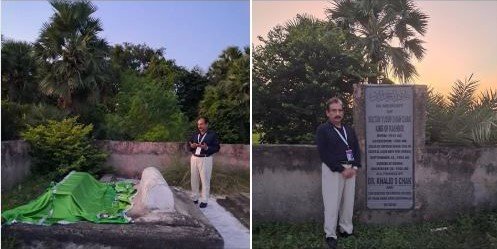
Shad’s social media post, describing the visit as “of great historical significance,” noted that Yousuf Shah was exiled to Bihar by Emperor Akbar after the Mughals annexed Kashmir. There, in Biswak, a village still home to families bearing the surname “Chak,” the descendants of Yousuf Shah are said to live on — preserving a living link to Kashmir’s royal past.
According to this version, the exiled ruler was eventually reunited with his beloved Habba Khatoon in Bihar, where the two lived their final years together and now rest side by side.
“I visited the place on 27 September 2025, accompanied by my friend Satish Vimal,” Shad wrote, calling it “a moment of rediscovery for Kashmiri history.”
Counterclaims: The Scholar’s Rebuttal and the Weight of Evidence
Not everyone agrees. Veteran broadcaster and cultural historian Peerzada Abdal Mehjoor has strongly dismissed these claims as “romantic myth-making.”
“For centuries, Habba Khatoon’s poetry has defined Kashmiri identity,” Mehjoor wrote. “But myths and misconceptions continue to cloud her real story.”
Drawing upon historical chronicles of the 16th and 17th centuries — including Persian records and local Kashmiri accounts — Mehjoor points out that no document mentions any woman named Habba Khatoon as Yousuf Shah Chak’s wife. Chroniclers of that time, known for meticulous detail, listed royal wives and consorts with precision. Their silence, he argues, is itself telling.
Equally firm is his stance on her grave’s location: “Habba Khatoon lies buried at Athwajan, on the outskirts of Srinagar.”
Editorial Note – Kashmir Rechords
The ongoing debate over Habba Khatoon’s grave — whether at Athwajan, Kashmir, or Biswak, Bihar — reflects the tension between folklore and historical scholarship. Drawing from archival materials, including the 1963 Archives Department expedition, Yousuf Taing’s 1977 article, and recent field visits by Shad Ramzan and Satish Vimal, this feature aims to preserve the spirit of inquiry surrounding one of Kashmir’s greatest cultural icons.It seems to be, however, ironical that certain forces are or have been creating controversies regarding Kashmir’s women poets .These include Arinmal ,Habba Khatoon and even the great Lall Ded has not been spared.!Whom do the deliberate and manufactured controversies regarding women poets of Kashmir serve? That seems to be a very fair and poignant question.
He cites photographic evidence from the early 1950s — showing Sheikh Mohammad Abdullah and the legendary poet Ghulam Ahmad Mahjoor inspecting the newly built structure over Habba Khatoon’s grave, constructed under Mahjoor’s supervision.
“The Biswak grave often mistaken for hers,” Mehjoor clarifies, “actually belongs to Yousuf Shah’s real wife — the mother of his son, Yaqoob Chak.”
The 1963 Discovery: When History First Knocked on Biswak’s Door
Interestingly, this is not the first time Biswak’s graves came under scholarly scrutiny.
Archival records reveal that in 1963, a team from the Jammu & Kashmir Archives Department, led by Sahebzada Hassan Shah, visited Bihar to locate manuscripts related to Kashmir’s history. The team — comprising Mohammad Amin Ibn Mahjoor, Mohammad Amin Rafiqi, Ghulam Rasool Bhat, and Ramji Dhar — also inspected the “Chak Mazaar” in Biswak.
Photographs of that visit, preserved by the historian’s family, confirm the existence of Yousuf Shah’s grave — but make no mention of any grave belonging to Habba Khatoon.
“How then,” asks Shakeel Rehman, son of one of the researchers, “did Habba Khatoon’s grave suddenly appear at the site in 1976, when Mohd Yousuf Taing persuaded Sheikh Abdullah to visit Biswak?”
The question continues to haunt scholars and enthusiasts alike.
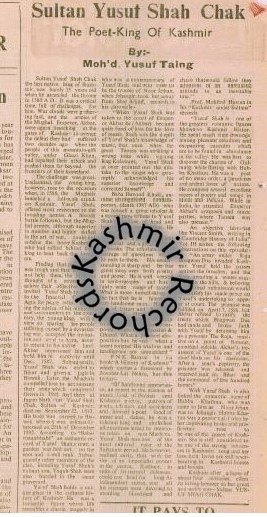
Taing’s Testimony: A 1977 Reaffirmation
Adding another twist, Kashmir Rechords has unearthed a valuable document — a detailed article written in January 1977 by Mohammad Yousuf Taing, former Secretary of the J&K Cultural Academy. Taing, who had himself visited Biswak decades earlier, confirmed that the grave of Habba Khatoon was indeed found beside that of Yousuf Shah Chak, along with the grave of his son.
This testimony, though conflicting with other historical evidence, keeps the debate alive — suggesting that perhaps, like her verses, Habba Khatoon’s resting place transcends simple certainty.
Taing’s Account: A Different Lens

Taing’s conclusion reignited the theory that Habba Khatoon, like the Mughal empress Noor Jehan, was not just a royal consort but a woman who redefined femininity through intellect and art.
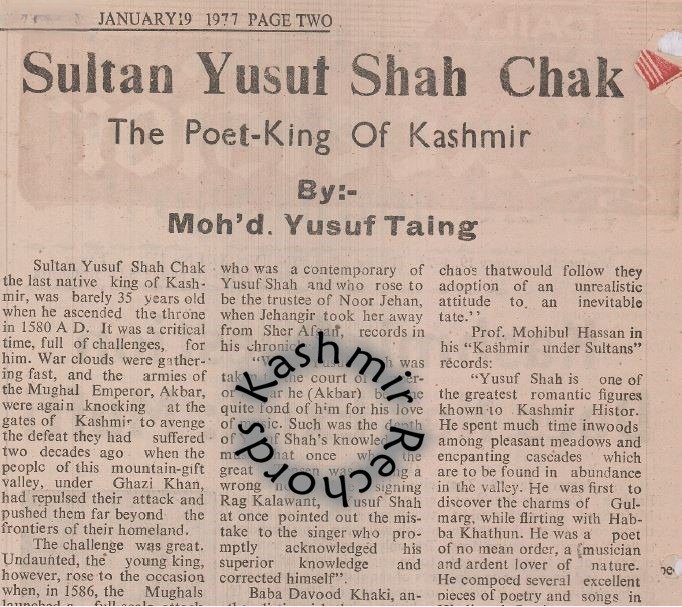
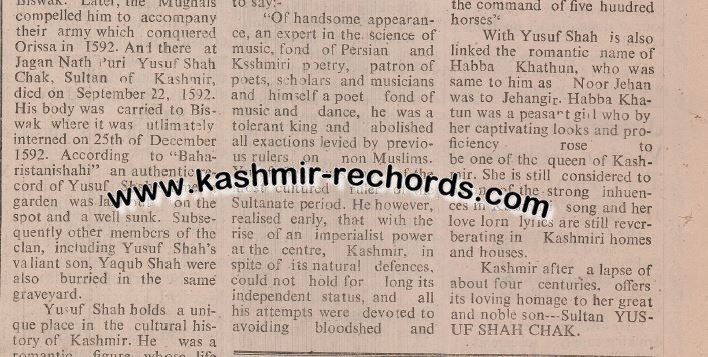
Just as Noor Jehan became the creative and political force beside Jehangir, Habba Khatoon — if indeed Yousuf Shah’s queen — turned her sorrow into song. Her transformation from the peasant girl Zoon of Pampore to the poetess Habba Khatoon mirrors Noor Jehan’s rise from Mehr-un-Nissa to the most powerful woman of her empire.
Both women, separated by decades but united in destiny, embodied the rare fusion of beauty, intellect, and creative spirit that reshaped their worlds.
Fact, Fiction, Power of Poetry
For historians, the debate is about documentation; for Kashmiris, it is about devotion.
Did Habba Khatoon, the poet-queen of longing, truly share her final resting place with the exiled king who loved her? Or is the romance of their reunion in Bihar merely a poetic echo of her own verses — a fable woven by time?
As cultural voices clash over archives, photographs and oral traditions, one truth stands unchallenged: Habba Khatoon’s poetry needs no myth to shine.
Her songs — of separation, resilience and the ache of lost freedom — remain Kashmir’s living heartbeat. Whether her grave lies by the Jhelum in Athwajan or in the distant soil of Biswak, her soul forever belongs to the Valley she immortalized in verse.

